5 Proven Customer Acquisition Strategies For B2C Startups
For B2C startups, customer acquisition strategies are something that need to change, grow and evolve constantly. Typical SEO, social media and all the other regular stuff from the book has almost never been the driver of growth.
Growth hacking strategies for startups evolve every day and you need to ride the wave. However, there are some methods that we have consistently tested and have provided results for different types of businesses.

Here is a detailed infographic that explains which channels to use for B2C customer acquisition. You can read about all the strategies in detail below the infographic.
Embed this infographic by pasting the code :
<p><strong>User Acquisition ( B2C) Infographic By Marketing Masala.com</strong><br /><br /><a href=’https://www.marketingmasala.com/customer-acquisition-strategy-b2c-startup/‘><img src=’https://www.marketingmasala.com/wp-content/uploads/2016/03/User-Acquisition-B2C-startups.png‘ alt=’User-Acquisition-B2C-startups’ width=’1600px’ border=’0′ /></a></p>
1. Remarketing Ads
Most companies treat growth as new customer acquisition. However, improving your conversion rates is equally important and that is exactly what remarketing can help you with.
Remarketing is a process of targeting people who are stuck at some level of your conversion funnel (for example, cart abandoners) and need to be pushed further (example- make a payment) with a tweaked marketing message.

Remember when you checked out that product on Amazon but never bought it? And then that particular product followed you around on all ads across your web browser. That is exactly what remarketing is all about.
Why do you need remarketing?
If you have users who came to your site but did not signup, went to the cart but did not buy, received an email but did not open it, welcome to the world of remarketing.
As a startup founder or marketer, one of your key roles would revolve around moving people further in the funnel. You might be doing a lot of landing page tests, ad copy rotation and changing targeting of your ads. However, to make sure that customers move further in the funnel, you need to tweak your marketing messages differently for everyone who is stuck at different levels of the funnel.
How to do remarketing the right way?
On the internet, you can find a lot of advice regarding Facebook marketing, Google remarketing, AdWords remarketing and what not.
However, all remarketing activities need to follow this process
- Setup a retargeting code on your site. This can be derived from Google Adwords or Facebook Business Manager.
- Setup custom audiences on these networks that you want to target via your remarketing.
- Select the custom audience that you want to target while remarketing.
- Keep a custom message for different audiences. For example, someone stuck at the cart page for more than 7 days can be offered a coupon code displayed through a remarketing ad.
- Analyze results and compare the cost of acquisition.
- Keep iterating on a weekly or monthly basis till you find the right fit.

2. Referral discounts
One of the best user acquisition channels is undoubtedly word of mouth/referral marketing. From a growth hacking perspective, you should be taking leverage of this and driving referral discounts in a scientific fashion.
How Dropbox rocketed their growth with referral marketing?
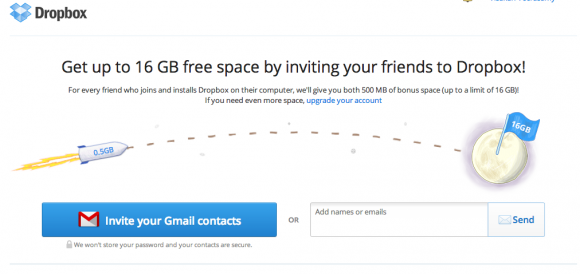
Dropbox, as you might know, is a cloud storage provider. In its early days, the company had scaled to a level but was still struggling with exponential growth. Their first growth hacker, Sean Ellis started out the following
Adding a referral option right in their signup process helped Dropbox go from 100,000 users to 4,000,000 in 15 months.
Dropbox used to spend $250 + to acquire customers for a $99 product. Imagine how well referral marketing helped them.
How to do drive some great referrals?
The key is to understand how to time it. You ideally want to ask someone for a referral when they have been using your product/service for a significant time which is credible enough to prove their active engagement with your company.
- Referrals can be driven either by remarketing ads targeted to existing customers and offering discounts for the same or asking for referrals within the product.
- Make sure you understand your customer journey within your product and show the referral ad/popup after the right time. For example, targeting people who just came to your eCommerce store will probably not be effective. However, targeting all the people who have purchased more than twice a month should be targeted with a referral discount via an ad or an email
3. Building search engine traffic the right way
Most people understand SEO the wrong way.
Here is how B2C startups need to rock their SEO strategy and optimization:
- Understand which content is in demand. Using Google Keyword Planner and KeyworTool.io, try and understand which keywords are people looking for and where competition is less. For example, here is a research I did when I had to write something about startup marketing ( the highlighted keywords are the ones that I selected finally)
- Build an amazing piece of content. Make sure that the content is not just made for the purpose of SEO and rankings, but to actually provide great value to someone. Be as descriptive as possible (long-form content works best), use the most amazing images you can and of course, format it right
- Promote your content to the right people: Most people get stuck here. They believe that producing great content is all that is needed for rankings. However, that is not the case at all. Promoting your content the right way is super important.
Email and social media outreach to influencers, bloggers and journalists works best for content promotion.
Here is how a pest control company was able to produce great content and do the right promotion for it: SEO case study
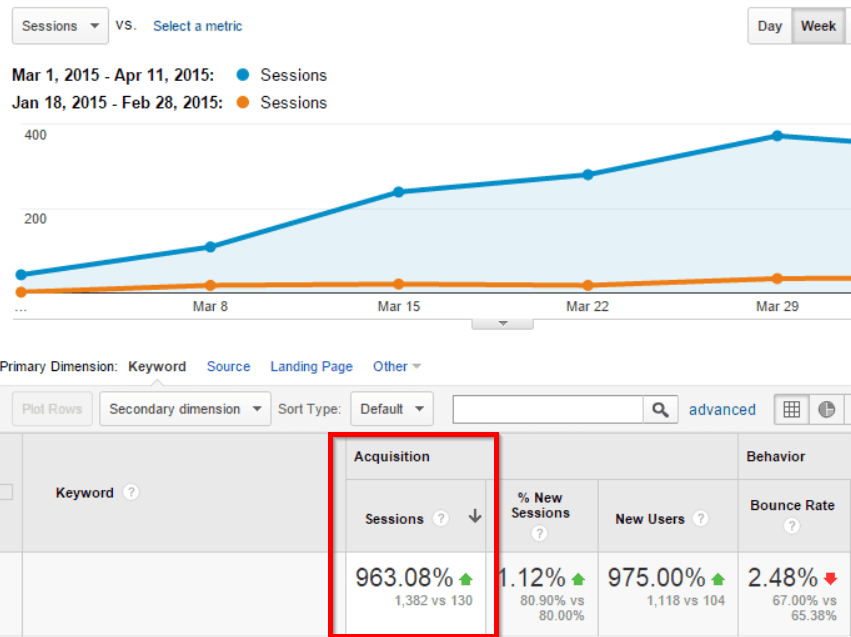
Want to take your business to the next level? Enroll for free growth hacking course and become an expert growth marketer. Enroll Now!

4. Social media conversations
You can get a lot of information on social media marketing, social media engagement and all sorts of social media tools on the planet, but one of the most important growth hacks in the B2C space is engagements on social media.
The key here is to sound human and genuinely engage with the audience without making it look like a self-promotional outreach
One of our clients was a recipe delivery company that sends recipes and ingredients at your doorstep. Here are some snapshots on how we used Twitter marketing to interact with them and drove direct orders with no ads at all.
How to do social media conversations the right way?
- Identify your target audience on social media. People use hashtags and keywords all the time. Using tools like Hootsuite, you can track the hashtags people use in their social media updates and start interacting with them in a genuine fashion.
- Ask for a review and not a sale. Ask people what they think of your product or service or blog posts. Never try to do a hard sell the first time. People will feel much better if you ask them for an opinion on your product rather than buying it. If they like it, they’ll definitely buy it.
5. Conversion rate optimization
A lot of companies keep wondering where their marketing went wrong whereas the actual case was that their product had certain issues because of which customers were not moving further in the funnel.
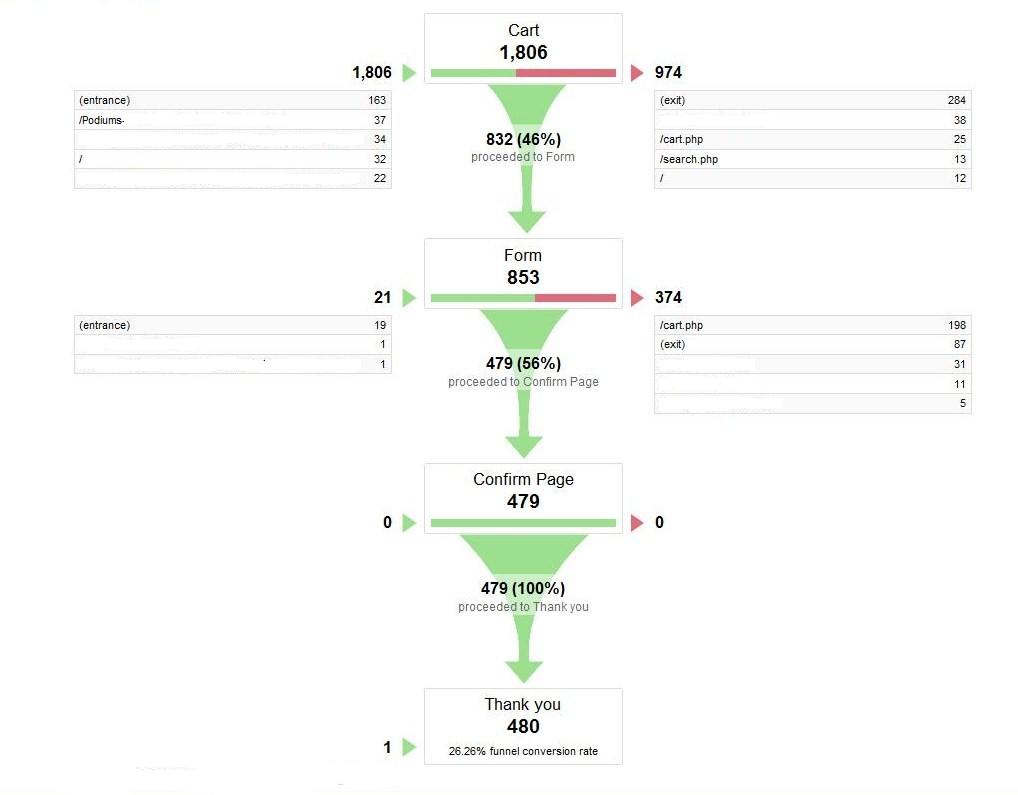
You might have heard a lot about creating landing pages the right way, however, the point is to understand data and analyze where people are leaving your website/app and then fix the issue with that.
How to take care of your conversion rate optimization?
- Understand how users are interacting with your website. Most companies keep pushing in more money but never really understand where the problem lies with their product. You have to understand what might be the issue with your website/app and then fix it. For example, a company that we were working with was facing a high card abandonment rate. We helped them see that as their product concept was new, people were not really sure about the credibility of their company. We decided to show customer testimonials on the product page in a bold way and conversions went much higher in one week.
- Keep testing with different landing pages. Tools like Unbounce can help you create different copies of your landing page in minutes. You should be always be testing by sending an equal amount of traffic to different pages (that you think might work well) and understand the conversion metrics from there. Whatever works, you need to go ahead with that.
Got some more questions about startup marketing? Hit me on shivankit@marketingmasala.com or Twitter


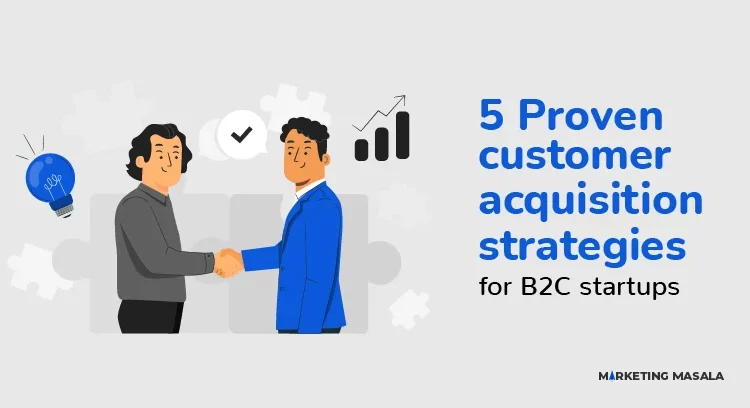

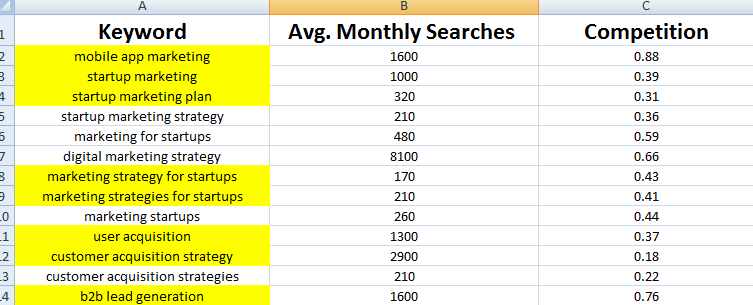

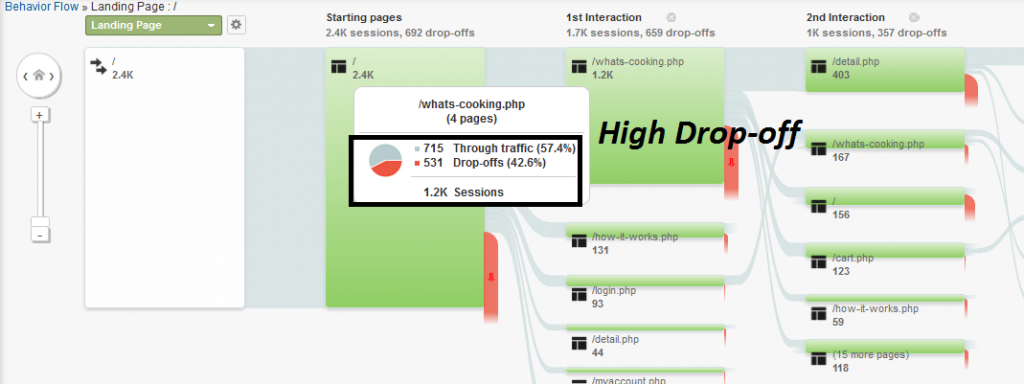
48 Comments
Read More Here
April 17, 2021
You really make it seem really easy with your presentation but I to find this topic to be actually one thing which I think I might by no means understand. It seems too complicated and extremely wide for me. I’m looking ahead for your next put up, I will try to get the hang of it!
Going Here
April 17, 2021
I’m so happy to read this. This is the kind of manual that needs to be given and not the accidental misinformation that is at the other blogs. Appreciate your sharing this greatest doc.
read more
April 18, 2021
Wow! Thank you! I constantly wanted to write on my site something like that. Can I take a portion of your post to my website?
Visit This Link
April 18, 2021
I intended to send you a very small observation to say thanks the moment again on the awesome thoughts you’ve featured in this article. It has been so shockingly generous with you to provide publicly what many individuals would’ve sold for an electronic book to end up making some bucks for themselves, particularly considering the fact that you could have tried it if you ever desired. The thoughts likewise served to become a fantastic way to know that other people have the identical zeal the same as mine to see a good deal more when considering this condition. I’m certain there are millions of more pleasant times in the future for individuals that read through your website.
Web Site
April 18, 2021
Valuable information. Fortunate me I discovered your website by chance, and I’m shocked why this twist of fate did not took place earlier! I bookmarked it.
Clicking Here
April 18, 2021
Wow, marvelous weblog layout! How lengthy have you been blogging for? you made blogging glance easy. The overall look of your website is fantastic, as well as the content!
click here
May 6, 2021
I think other site proprietors should take this website as an model, very clean and great user genial style and design, let alone the content. You’re an expert in this topic!
Read This
May 6, 2021
You really make it seem so easy with your presentation but I find this matter to be actually something which I think I would never understand. It seems too complex and very broad for me. I’m looking forward for your next post, I will try to get the hang of it!
Go Here
May 6, 2021
Simply desire to say your article is as astounding. The clarity in your post is just great and i can assume you’re an expert on this subject. Fine with your permission let me to grab your feed to keep updated with forthcoming post. Thanks a million and please continue the gratifying work.
learn more
May 6, 2021
Excellent read, I just passed this onto a friend who was doing a little research on that. And he actually bought me lunch since I found it for him smile So let me rephrase that: Thanks for lunch!
Discover More
May 6, 2021
I loved as much as you’ll receive carried out right here. The sketch is tasteful, your authored material stylish. nonetheless, you command get bought an impatience over that you wish be delivering the following. unwell unquestionably come more formerly again since exactly the same nearly very often inside case you shield this increase.
learn more
May 6, 2021
I think other site proprietors should take this website as an model, very clean and great user genial style and design, let alone the content. You’re an expert in this topic!
Click Here
May 6, 2021
you are actually a good webmaster. The website loading velocity is amazing. It seems that you are doing any distinctive trick. In addition, The contents are masterpiece. you’ve done a excellent process on this subject!
Read This
May 6, 2021
Great write-up, I¡¦m regular visitor of one¡¦s blog, maintain up the excellent operate, and It is going to be a regular visitor for a long time.
visit here
May 6, 2021
Hello There. I found your blog using msn. This is a really well written article. I will make sure to bookmark it and come back to read more of your useful information. Thanks for the post. I’ll certainly return.
Click This Link
May 6, 2021
I am constantly searching online for ideas that can facilitate me. Thanks!
Read More Here
May 6, 2021
I think this is one of the most important info for me. And i’m glad reading your article. But should remark on few general things, The website style is great, the articles is really excellent : D. Good job, cheers
Home Page
May 6, 2021
Hello there, just became alert to your blog through Google, and found that it is truly informative. I am gonna watch out for brussels. I’ll be grateful if you continue this in future. Lots of people will be benefited from your writing. Cheers!
Read More Here
May 6, 2021
I really appreciate this post. I¡¦ve been looking all over for this! Thank goodness I found it on Bing. You have made my day! Thank you again
Discover More
May 6, 2021
My husband and i felt now lucky that Raymond could round up his research out of the ideas he came across using your web site. It’s not at all simplistic just to choose to be giving freely strategies people today may have been making money from. And we also figure out we’ve got you to be grateful to for that. All of the explanations you made, the easy web site menu, the relationships you help instill – it’s most sensational, and it’s really letting our son in addition to us believe that that situation is pleasurable, and that’s extremely important. Thanks for everything!
view source
May 6, 2021
This is really interesting, You’re a very skilled blogger. I have joined your feed and look forward to seeking more of your great post. Also, I’ve shared your site in my social networks!
more info
May 6, 2021
I’ve been surfing online more than 3 hours today, but I never discovered any attention-grabbing article like yours. It¡¦s pretty worth enough for me. In my view, if all web owners and bloggers made good content material as you did, the internet can be much more useful than ever before.
Read This
May 7, 2021
Nice post. I was checking constantly this blog and I am impressed! Very useful info specifically the last part 🙂 I care for such info a lot. I was looking for this particular info for a long time. Thank you and good luck.
Click This Link
May 7, 2021
hey there and thank you for your info – I have definitely picked up anything new from right here. I did however expertise a few technical issues using this website, as I experienced to reload the web site lots of times previous to I could get it to load correctly. I had been wondering if your web host is OK? Not that I am complaining, but slow loading instances times will very frequently affect your placement in google and could damage your high quality score if ads and marketing with Adwords. Anyway I’m adding this RSS to my email and could look out for a lot more of your respective interesting content. Ensure that you update this again soon..
Discover More Here
May 7, 2021
Keep functioning ,remarkable job!
Click Here
May 7, 2021
As a Newbie, I am permanently searching online for articles that can be of assistance to me. Thank you
Visit Website
May 7, 2021
Thank you for sharing excellent informations. Your web-site is so cool. I’m impressed by the details that you have on this blog. It reveals how nicely you perceive this subject. Bookmarked this website page, will come back for more articles. You, my pal, ROCK! I found simply the information I already searched everywhere and simply could not come across. What a great site.
Visit This Link
May 7, 2021
My brother suggested I might like this website. He was entirely right. This post actually made my day. You can not imagine simply how much time I had spent for this info! Thanks!
website
May 8, 2021
Hiya, I am really glad I have found this info. Nowadays bloggers publish just about gossips and internet and this is actually irritating. A good site with interesting content, this is what I need. Thank you for keeping this web site, I’ll be visiting it. Do you do newsletters? Can not find it.
Website
May 8, 2021
You really make it seem really easy with your presentation but I to find this topic to be actually one thing which I think I might by no means understand. It seems too complicated and extremely wide for me. I’m looking ahead for your next put up, I will try to get the hang of it!
view source
May 9, 2021
I have been surfing online more than 3 hours today, yet I never found any interesting article like yours. It is pretty worth enough for me. In my opinion, if all web owners and bloggers made good content as you did, the internet will be much more useful than ever before.
more info
May 9, 2021
Good article and right to the point. I don’t know if this is really the best place to ask but do you folks have any thoughts on where to employ some professional writers? Thanks in advance 🙂
more info
May 9, 2021
I was recommended this website by my cousin. I’m not sure whether this post is written by him as nobody else know such detailed about my trouble. You are incredible! Thanks!
Home Page
May 9, 2021
Great tremendous things here. I’m very glad to look your article. Thank you so much and i am taking a look ahead to contact you. Will you please drop me a mail?
Find Out More
May 9, 2021
I want to express my appreciation to the writer just for bailing me out of this type of setting. After looking through the world wide web and getting views that were not beneficial, I assumed my entire life was well over. Existing without the presence of solutions to the difficulties you have solved all through your entire write-up is a crucial case, and ones that might have negatively damaged my entire career if I hadn’t come across your blog. Your own personal mastery and kindness in dealing with all areas was tremendous. I don’t know what I would’ve done if I had not discovered such a step like this. I can now look forward to my future. Thanks for your time very much for this reliable and results-oriented help. I will not hesitate to refer your web site to anyone who requires assistance about this issue.
Home Page
May 9, 2021
As a Newbie, I am permanently searching online for articles that can be of assistance to me. Thank you
Learn More Here
May 9, 2021
Normally I do not learn post on blogs, however I wish to say that this write-up very forced me to take a look at and do so! Your writing style has been amazed me. Thanks, quite great article.
Read This
May 9, 2021
Howdy very cool site!! Man .. Excellent .. Wonderful .. I’ll bookmark your web site and take the feeds also¡KI am glad to search out numerous useful info here within the post, we want work out extra strategies on this regard, thanks for sharing. . . . . .
Learn More
May 9, 2021
I am not sure where you are getting your info, but great topic. I needs to spend some time learning more or understanding more. Thanks for excellent information I was looking for this information for my mission.
Web Site
May 9, 2021
Undeniably believe that which you said. Your favorite justification appeared to be on the net the easiest thing to be aware of. I say to you, I definitely get annoyed while people consider worries that they just don’t know about. You managed to hit the nail upon the top and also defined out the whole thing without having side effect , people could take a signal. Will probably be back to get more. Thanks
Get More Info
May 9, 2021
My husband and i felt now lucky that Raymond could round up his research out of the ideas he came across using your web site. It’s not at all simplistic just to choose to be giving freely strategies people today may have been making money from. And we also figure out we’ve got you to be grateful to for that. All of the explanations you made, the easy web site menu, the relationships you help instill – it’s most sensational, and it’s really letting our son in addition to us believe that that situation is pleasurable, and that’s extremely important. Thanks for everything!
Visit This Link
May 9, 2021
This is really interesting, You’re a very skilled blogger. I have joined your feed and look forward to seeking more of your great post. Also, I’ve shared your site in my social networks!
Get More Info
May 9, 2021
you are actually a good webmaster. The website loading velocity is amazing. It seems that you are doing any distinctive trick. In addition, The contents are masterpiece. you’ve done a excellent process on this subject!
click here
May 9, 2021
I have been absent for a while, but now I remember why I used to love this web site. Thank you, I will try and check back more often. How frequently you update your web site?
Website
May 9, 2021
Hello, i think that i saw you visited my blog thus i came to “return the favor”.I’m attempting to find things to enhance my website!I suppose its ok to use some of your ideas!!
Clicking Here
May 9, 2021
I’ve been surfing online more than 3 hours today, but I never discovered any attention-grabbing article like yours. It¡¦s pretty worth enough for me. In my view, if all web owners and bloggers made good content material as you did, the internet can be much more useful than ever before.
click here
May 9, 2021
Wow, fantastic blog layout! How long have you been blogging for? you make blogging look easy. The overall look of your site is magnificent, as well as the content!
Son
December 27, 2021
Hello there, just became aware of your blog through Google,
and found that it is truly informative. I am going to watch out for brussels.
I’ll appreciate if you continue this in future.
Numerous people will be benefited from your writing.
Cheers!